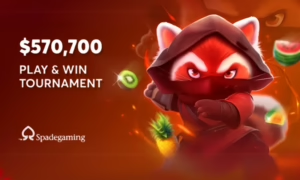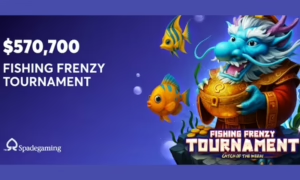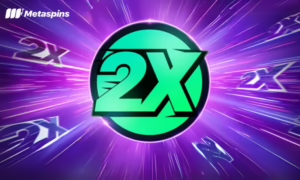A new type of NFT, Bitcoin Ordinals, are connected to the Bitcoin blockchain and are gaining significant traction as of late.
Bitcoin Ordinals are a new type of NFT that has rapidly gained popularity in 2023, largely thanks to the fact that they are connected to the original and biggest blockchain, namely the Bitcoin blockchain. Ordinals protocol was launched on the Bitcoin blockchain on January 21, 2023, allowing users to mint NFTs directly onto the blockchain.
This is significant as it is the first time such data has been added to the Bitcoin blockchain without utilizing a token or side chain. Officially called Ordinal Inscriptions, they are usually referred to as ‘Ordinals’ for short and sometimes ‘Bitcoin NFTs’ as well.
The Bitcoin blockchain was originally intended as purely transactional, so the introduction of Bitcoin NFTs has resulted in many mixed feelings among Bitcoin enthusiasts. So naturally, it has been making headlines since its release. Regardless, the adoption was rapid, as by February 15, the 100,000 Ordinal inscription milestone had already been reached.
Who created Ordinals?
Ordinals were created by a former Bitcoin Core contributor, Casey Rodarmor. He is a software engineer by profession.
He announced Ordinal’s release on Twitter:
What is an Ordinal NFT?
A Bitcoin ordinal is a non-fungible token that is minted on the Bitcoin blockchain. The term “ordinal” refers to the fact that these NFTs are typically issued in a numbered sequence, or within a set data type. The ordinals whitepaper recognizes these Bitcoin NFTs as ‘digital artifacts’ since they are pieces of ‘data introduced in a digital process by an involved technique and/or technology’. This seems to suggest that a digital artifact is a type of data that is added to an existing digital infrastructure that goes against the original intention of that infrastructure’s design.
Ordinal NFTs make use of inscriptions powered by the Ordinal protocol, which was implemented through the Taproot update led by Casey Rodarmor. The ordinal protocol aims to inscribe information directly onto Satoshis themselves rather than being minted as an independent token, which is how NFTs are usually created. Satoshis are the smallest denomination of a Bitcoin in the same way a cent is the smallest denomination of a dollar.
Bitcoin ordinals differ from traditional ERC20 and other NFTs in the manner of their storage. Whereas standard NFTs are just contract files stored within the metadata, as a link, Bitcoin ordinals are stored as the whole file within the blockchain rather than just a link to the file. The ordinal data file resides entirely within the witness signature field of the transaction, meaning the digital file is truly embedded within the Bitcoin blockchain. This means that Ordinals are created in a way that alters the original BTC data against its initial programming since BTC was intended to be a purely transactional network whose coding could not be tampered with.
To reiterate, Ordinals are attached to an immutable, pre-existing cryptocurrency, whereas NFTs are stand-alone tokens that are built on top of an existing blockchain and can be removed from circulation, unlike ordinal NFTs which can never be removed.
What is the benefit of Ordinals?
Immutability
The benefit of this type of blockchain-based digital media is that it becomes immutable. This means that it can never be deleted or removed from circulation thanks to the fact that no Satoshi can ever be removed from circulation. So, once a digital artifact is inscribed onto a Satoshi it will exist for as long as the Bitcoin blockchain exists, which hypothetically should be forever.
Inscribed onto Satoshis
These Bitcoin NFTs are inscribed directly onto Satoshis without the use of a smart contract. This means that the owner will receive full profits whenever they resell their Inscription, without a percentage going towards resale royalties to the original artist.
Increases the number of active Bitcoin addresses
Since Ordinals inception, the number of Bitcoin non-zero blockchain addresses (they contain more than zero BTC) has increased from around 41.6 million at the beginning of January to 43.8 million by February 9. This was a new all-time high (ATH), with the previous record being at about 42 million. This means that there has been an increase of 1.6 million active users in less than a month.
Rarity
Due to the complexity and expense involved in minting Ordinals, they are rare, which potentially means they should be of higher market value than the majority of traditional NFTs.
What are the disadvantages of Ordinals?
Expensive to create and transact
Ordinals are created on the Bitcoin blockchain, which means that they require Bitcoin to mint, store and transact. This is because to inscribe on a Satoshi, you must first own one, and performing the creation of the transaction will also incur a mining fee. This is in addition to the transaction fee for acquiring and storing the inscribed Satoshi. This makes them relatively expensive to create and transact compared to normal NFT projects. There is also no possibility of artists earning royalties on second-hand sales because there is no smart contract connected to the Inscription.
Large computer memory commitment
You will also need to run a Bitcoin node to mint or sell an Inscribed NFT, which takes up a lot of ROM and RAM on your PC.
Difficult to create
They are much more complicated to create than regular NFTs, which acts as a barrier to artists who might not be so tech-savvy. This is why by February 19, 2023, there were only around 138,600 Ordinals that had been created.
Lack of regulation
There is no central authority to approve Ordinals, therefore anything, no matter how unsavory, can be inscribed onto the Bitcoin blockchain. The best that Rodarmor has been able to do is to make it more difficult to search for those Ordinals in his Inscription search software.
Single-blockchain compatibility
Ordinals cannot be transferred between blockchains because they are Inscribed directly onto the Bitcoin blockchain.
Currently stand-alone
Ordinals cannot currently interact with each other the way that NFTs can. For instance, Polygon-based Reddit avatars’ NFT outfits can be mix-and-matched, whereas Ordinals are currently self-contained. This is being worked on.
Clog up transaction network
Ordinals are increasing the demand for block space which means that both the fees and transaction times have increased, which is inconvenient to those wishing to transact actual BTC.
What was the first Ordinal NFT?
The first Ordinal is ‘Inscription 0,’ minted on December 14, 2022. It was inscribed on Satoshi 1252201400444387 at genesis height 767430. This was over a month before the protocol’s official release. There were 17 more trial Ordinals created before the official release on January 21.
How was Ordinal added to the Bitcoin Blockchain?

In November 2021, a massive upgrade was implemented to the Bitcoin blockchain with the introduction of the Taproot soft fork that was integrated into the blockchain protocol at block 709,632. This upgrade allowed for more flexibility in the Bitcoin blockchain’s programmability moving forward.
Rodarmor saw this as an opportunity to make changes that would allow for wider applications of the Bitcoin blockchain, starting with Ordinals which would enable users to inscribe data directly not the Bitcoin blockchain. He did this by creating the ‘Ordinal theory’ protocol. The Ordinals protocol is open-sourced and available on GitHub. This means that anyone can view it and recommend upgrades to the coding, or check it for vulnerabilities or other flaws.
How does the Ordinal Theory protocol work?
The Ordinal theory protocol operates by automatically assigning serial numbers to Satoshis. These serial numbers are then used to track each Satoshi as it is transacted. This means that it is possible to track the entire transactional history of a Satoshi all the way back to when it was first mined. Each serial number is given to a Satoshi in the order in which it is mined. Therefore, the first Satoshi mined in the first block has an ordinal number of 0, while the second has an ordinal number of 1, and so on.
How do Ordinals differ from Ethereum NFTs?
Most Ethereum NFTs can be burned by the creators or owners are the NFTs. This means that they will be sent to a unidirectional crypto wallet address from which they can never be removed. This makes them as good as deleted from the Ethereum network.
However, the nature of the Bitcoin blockchain makes all data hashed onto it immutable, meaning that they can never be modified nor removed from the network. Furthermore, there are only a handful of wallets that can currently store and trade Ordinal NFTs, unlike the thousands of wallet options available to Ethereum-based NFTs. Some of these wallets include Ord, Xverse Wallet, and Ordinals Wallet.
How are NFTs transferred to the Bitcoin blockchain from other blockchains?
NFTs are usually transferred between blockchains through one of two methods, namely either burning or wrapping. Burning is when a cryptocurrency or token is permanently removed from circulation transferring them to a wallet address that is specifically allocated for the sole purpose of those coins alone being transferred to it.
Wrapping is similar to burning, except that tokens are not lost to circulation. It entails the NFT being transferred to a wallet where it is locked. A blockchain bridge app then creates a duplicate copy of the token on the other blockchain which then represents the amount of crypto or the token that has been locked. For instance, wrapped Bitcoin on the Ethereum network is stylized as wBTC. It has the same value as the BTC that is locked on the Bitcoin blockchain because the holder knows that it will allow them to switch it out for that BTC, should they prefer to utilize that BTC on the same chain again. In the case of Inscription, wrapping is not possible because the Bitcoin blockchain is immutable, meaning that data cannot be removed from it once it is inscribed on a block through mining.
An example of this is Jason A. Williams took a major risk on February 12, 2023, when he decided to burn his rare Bored Ape Yacht Club (BAYC) NFT, “The Blonde Don” BAYC #1626, on the Ethereum blockchain and then move it across to the Bitcoin blockchain as an Inscription. Essentially, he sent his BAYC to a burner address and inscribed a copy of it as a JPEG onto the BTC blockchain. He used TeleBurn for this action in order to make this action completely traceable between blockchains. This is something that cannot be undone since the process of burning an NFT removes the NFT from circulation by sending it to a one-way wallet address from which it can never be restored.
This also means that since it is no longer registered on the Ethereum blockchain, it has become disconnected from the Yuga Lab’s side-chain and so will likely be unable to participate in any events such as the Dookey Dash game. In fact, on February 23, 2023, Yuga Labs cofounder, Greg Solano, confirmed in a tweet that by doing this, Williams had essentially lost ownership rights to the BAYC since it is still on the Ethereum blockcahin, but is simply no longer under an address he controls.
According to the OpenSea records, he paid 108 ETH for it on November 18, 2021. According to CoinMarketCap, this would have been the equivalent of about $427,572 USD.
ON the bright side, Yuga Labs, the creators of BAYC have announced plans to release a new Ordinal series exclusively on the Bitcoin blockchain called Megapont Ape Club, which may open a way for BAYC #1626 to eventually be connected back to the Yuga Labs’ platform and associated events. It is also noteworthy that many are sceptical as to whether the BAYC #1626 was actually sent to a burner address or not.
Why do people love Ordinals?
Some people love that ordinals encourage widespread adoption of the Bitcoin blockchain. Others love it because it allows them to troll Bitcoin maxis, whom they know can’t stand the fact that the ‘purity’ of the Bitcoin blockchain is being assaulted with NFTs.
Why do people hate Ordinals?
There are two main reasons why people hate Ordinals. The first reason is that they are Bitcoin maximalists (maxis.) Bitcoin maxis believe that BTC is the future of all currencies and that the bitcoin blockchain is the only truly reliable and infallible blockchain. They believe that the best way to maintain its security is to keep the protocols as simple as possible because the simpler it is, the less chance there is for it to get hacked. They also believe that use cases beyond a simple currency water down Bitcoin by turning it into a digital asset other than a pure cryptocurrency.
Secondly, they hate Ordinals because the Bitcoin blockchain can only process between 7-10 transactions per second (tps) which means that thanks to Ordinals, there is an even greater demand on the already strained transaction chain. But this does not only bottleneck BTC transactions, it also increases the transaction fees, since the higher the demand, the higher the fees.
Fortunately, in the case of BTC, transaction layers such as the Lightening network, were developed to help to facilitate many more transactions per second at a cheaper rate by allowing for 1 million tps. This is a significant achievement considering that even a major finacnai service provider like Visa only has the capacity of fulfilling 24,000 tps.
| Pros | Cons |
|---|---|
| Promotes wider adoption of Bitcoin | Bottlenecks payment transactions by adding Ordinals to the mining process and transaction waiting list |
| They are immutable which means that they can never be deleted or burned | Immutability means that even unsavory media files will be permanently etched into the Bitcoin blockchain |
| Increases Bitcoin mining demand, which increases mining fees | Higher demand means higher transaction fees |
| Increased use case means greater adoption of the Bitcoin blockchain | 4MB data cap size |
| More nodes in the network mean greater security | Malware could be Inscribed as an Ordinal |
| The energy cost of Ordinal mining and transactions is bad for the environment | Increased transaction fees blocks adoption in developing countries and other poorer social classes |







